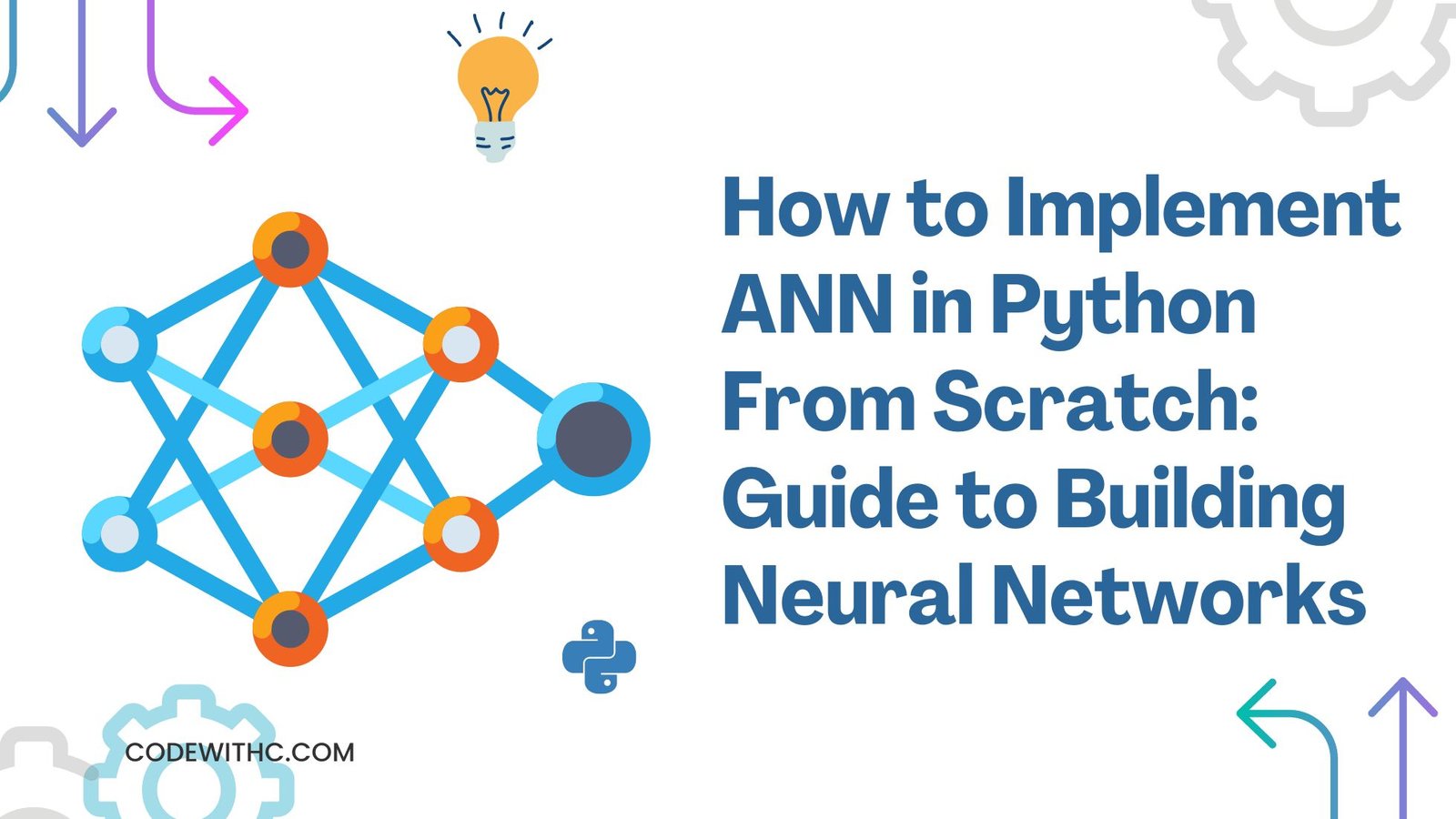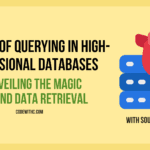Hey everyone, what’s poppin’? ?? Are you ready to demystify one of the most intriguing marvels in the machine-learning universe? Yes, I’m talking about Artificial Neural Networks (ANN)! But wait, we’re not just skimming the surface here; we’re going full-on DIY mode by building an ANN in Python from scratch! ??
Whether you’re a seasoned data scientist looking to brush up on your skills or a newbie eager to dive into the deep end, this blog post is your golden ticket. We’ll be unwrapping the complex layers of ANN, breaking down neurons, layers, and activation functions, and stitching them all together with some Python magic. ??
So, tighten your seat belts, folks! We’re about to embark on a coding journey that’ll take you from zero to ANN hero. Let’s get this show on the road! ??
What is Artificial Neural Networks (ANN)?
Before we dive into the coding pool, let’s first understand what an ANN is. Artificial Neural Networks are essentially computational models inspired by the human brain. These networks consist of interconnected nodes or ‘neurons’ that process information and make decisions. Sounds like sci-fi? Well, it kind of is, but it’s also very real and incredibly powerful!
Why ANN is a Big Deal
ANNs have been a cornerstone in the machine-learning world for quite some time now. Whether it’s recognizing handwritten digits or powering self-driving cars, ANN plays a pivotal role. The essence of ANN lies in its ability to learn from data, much like how humans learn from experiences. ?
The Building Blocks: Neurons and Layers
At the core of an ANN are neurons organized in layers. Think of these layers as different departments in a company. You’ve got the input layer, hidden layers, and the output layer. Each of these has a specific job to do in the data processing pipeline. ?
Setting Up Your Python Environment
Alright, let’s get our hands dirty with some code. First things first, you’ll need Python installed on your system. You’ll also need the NumPy library for numerical operations, which is like the bread and butter for any ANN implementation.
Libraries and Dependencies
import numpy as np
Code Explanation
We’re importing NumPy because it offers a bunch of functionalities that make matrix operations (a huge part of ANN) super easy.
Implementing the ANN in Python
Now that we’re all set, let’s jump into the actual coding part. We’ll start by implementing the feedforward neural network, which is the most straightforward type of ANN.
The Feedforward Function
def feedforward(inputs, weights, bias):
z = np.dot(inputs, weights) + bias
return 1 / (1 + np.exp(-z))
Code Explanation
Here, feedforward calculates the weighted sum of its inputs, adds a bias, and then applies an activation function. In this example, we’re using the sigmoid function as our activation function.
Expected Output
When you call this function with inputs, weights, and a bias, it should return the output after applying the activation function.
Tackling Practical Problems
It’s all well and good to implement an ANN, but how does it solve real-world issues? Let’s dive into that.
So you’ve built your ANN, and you’re ready to take on the world—or at least a hefty dataset or two. ?? But before you jump into solving universal mysteries, let’s look at some practical problems where your freshly-minted ANN can really shine.
ANN in Financial Forecasting
Let’s talk money, honey! ? The finance sector is a goldmine for data, and ANN is the new-age pickaxe. Financial institutions use ANNs for tasks like stock price prediction, fraud detection, and customer segmentation. The idea is to train your network on historical financial data, allowing it to recognize patterns and make more accurate predictions. Imagine your ANN telling you the best time to buy or sell stocks; it’s like having a financial advisor on steroids!
ANN in Healthcare Predictive Analysis
Healthcare is another sector where ANN is making waves, or should I say, saving lives. ?? By analyzing medical records, lab results, and even genetic data, ANNs can predict patient risks for various diseases. Imagine an ANN-powered system that can flag potential health risks long before symptoms appear. It’s not just preventative; it’s revolutionary!
ANN in Supply Chain Optimization
If you’ve ever wondered how companies like Amazon manage to deliver your orders so darn fast, the answer might just be ANN. ?? These algorithms can optimize routes, manage inventories, and even predict maintenance needs for machinery. All this contributes to a smoother, faster, and more cost-effective supply chain.
ANN in Natural Language Processing (NLP)
ANNs are heavily used in NLP tasks like sentiment analysis or chatbots. By training an ANN on a dataset of customer reviews, for example, you can predict whether a new review is positive or negative.
ANN in Image Recognition
Another massive application of ANN is in image recognition. Convolutional Neural Networks, a type of ANN, have set the gold standard in tasks like object detection and facial recognition.
Final Thoughts and Additional Resources
So, there you go, folks! You now have the basic know-how to implement an ANN in Python from scratch. But remember, this is just the tip of the iceberg. The world of ANN is vast and ever-evolving, with a plethora of architectures and algorithms to explore.
And there we have it! We’ve traversed the complex labyrinth of Artificial Neural Networks and emerged not just unscathed but enlightened! ? From understanding the crux of what makes ANN tick to actually crafting one with Python, we’ve covered a lot of ground. And let’s not forget the myriad of practical problems that ANNs are solving in today’s world; it’s like they’re the Swiss Army knives of the data science realm! ??
As you go on to apply this knowledge, remember that the key to mastering ANN, or any technology for that matter, lies in continuous learning and practical application. So don’t just let this code gather digital dust; put it to work! Whether it’s optimizing your company’s supply chain or breaking new ground in healthcare analytics, the sky’s the limit! ?✨
Thank you, my fellow code warriors, for tagging along on this epic adventure. Your thirst for knowledge is what fuels this blog, and I can’t wait to tackle more complex topics with you all. Until then, keep those neurons—both biological and artificial—firing! ??
Your engagement is my inspiration, so drop your thoughts, questions, or even your own ANN implementations in the comments. Catch you in the next one and remember—code like you’re painting the Sistine Chapel! ??? #ANNMasterclass #KeepTheCodeFlowing







